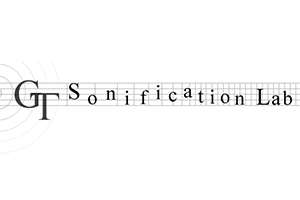Students in the Sonification Lab and Center for Music Technology designed Solar System Sonification, an auditory experience of the planets. Using non-speech audio to convey information, they built a musical model of the solar system.
Planetariums typically rely on visuals with various levels of speech description but have not explored using auditory cues to present information about space. Auditory displays, like the ones developed for Solar System Sonification, enable more immersive experiences and make information accessible to people with visual impairments.
The project offers two views: the solar system view and the planetary view. The solar system view looks at the whole system through how the planets and other objects interact. The planetary view focuses on properties of the planets themselves.
For the solar system view, attributes such as mass, length of a year (orbital period), length of day, and distance from the sun are displayed. For the planetary view, attributes such as planet type, number of moons, number of rings, gravitational force, and the mean temperature range are represented.
See 2017 publication for details on the design of auditory displays for this project.

The Georgia Tech Sonification Lab is an interdisciplinary research group based in the School of Psychology and theSchool of Interactive Computing at Georgia Tech. Under the direction of Prof. Bruce Walker, the Sonification Lab focuses on the development and evaluation of auditory and multimodal interfaces, and the cognitive, psychophysical and practical aspects of auditory displays, paying particular attention to sonification. Special consideration is paid to Human Factors in the display of information in "complex task environments," such as the human-computer interfaces in cockpits, nuclear powerplants, in-vehicle infotainment displays, and in the space program.
[Random Image of Auditory Interface] Since we specialize in multimodal and auditory interfaces, we often work with people who cannot look at, or cannot see, traditional visual displays. This means we work on a lot of assistive technologies, especially for people with vision impairments. We study ways to enhance wayfinding and mobility, math and science education, entertainment, art, music, and participation in informal learning environments like zoos and aquariums.
The Lab includes students and researchers from all backgrounds, including psychology, computing, HCI, music, engineering, and architecture. Our research projects are collaborative efforts, often including empirical (lab) studies, software and hardware development, field studies, usabilty investigations, and focus group studies.


